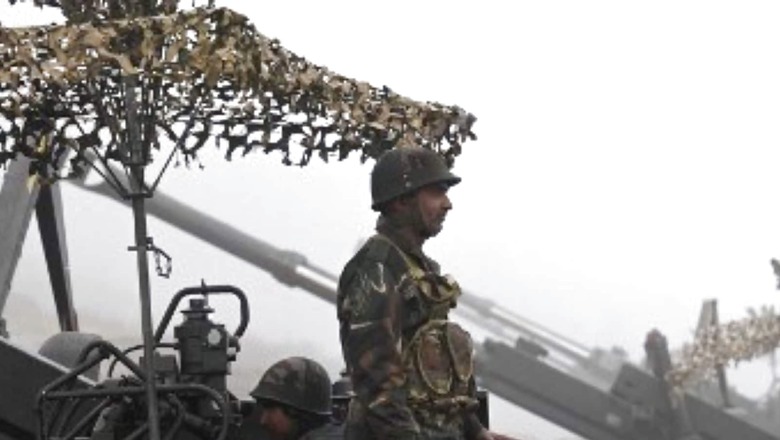
views
Partition of India and erstwhile state of Bengal in 1947 resulted in the creation of East Pakistan (present-day Bangladesh) as a wedge between the Indian state of West Bengal and rest of the Northeastern states leading to a major strategic challenge for post-Independence India. The current geographical layout connects the eight Northeastern states with the rest of India through a narrow strip of about 23 kms at Siliguri in West Bengal, called the Chicken’s Neck. It is bounded by Chumbi Valley of Bhutan to the North, Nepal to the Northwest, Bangladesh to the South and connects Northeast India to the rest of India in the West.
Besides this unenvious geographical configuration, the Partition of 1947 made Northeast India landlocked. The earlier direct access of this region to the Bay of Bengal is now either through Bangladesh or Myanmar or through the circuitous route to Kolkata via Siliguri, which is a major impediment to the economic growth and limits strategic options from the national security perspective. Well-established pre-Partition inland waterways passing through Bangladesh ceased to exist due to hostility between India and Pakistan, which further added to the problems of supply chain and logistics.
ALSO READ | India Must Revisit One China Policy; Beijing Only Responds to Sticks, Seldom to Carrots
Another interesting aspect of Northeast India is that while a 23-km-wide Chicken’s Neck connects it to the rest of India, the region has almost one-third of India’s borders (5600 km), with a 100 km-long Line of Actual Control (LAC) with China. When the LAC with China is viewed in the context of Chicken’s Neck, the biggest threat to the Chicken’s Neck is its proximity to Tibet Autonomous Region (TAR) of China via the narrow Chumbi Valley, which is Bhutanese territory but is included in the Chinese claim line against Bhutan. The Chumbi Valley with the Indian state of Sikkim to its West and Bhutan to its East sticks like a dagger pointing at the Chicken’s Neck (Siliguri Corridor).
In June 2017, a border standoff between the Indian Army and the Chinese People’s Liberation Army (PLA) took place at Doklam when the Chinese attempted to construct a road through the Chumbi Valley towards the Siliguri Corridor. It is pertinent to note that Doklam is located at the tri junction of India, Bhutan and China, which lends it immense strategic significance.
The Doklam incident once again confirmed the Salami Slicing strategy of the PLA where they move forward in unexpected new areas and then inch backwards to reach somewhere halfway after prolonged negotiations, retaining some of the grabbed portion for themselves.

Credit: News18
Post-Doklam, there have been reports of PLA setting up permanent camps—which never existed before—in the area. Such advanced preparations surely give PLA an added advantage in case they decide to execute any aggressive design in future. Indian security establishment needs to put counter-measures in place to prevent being caught off-guard, especially when a resurgent China has exhibited expansionist tendencies in the recent past.
China’s actions in Eastern Ladakh and a recent legislation of putting the border areas under the army must be assessed as a larger design. India’s membership of QUAD and closer relations with the US make the Chinese uncomfortable because they question Beijing’s unbridled hegemony and expansionist designs. China may decide to deflect global pressure mounted by groupings like QUAD in the Indo-Pacific by intrusions into Indian land borders.
The recently released annual report to the US Congress on China’s military and security developments confirms that despite negotiations at diplomatic and military levels, the People’s Republic of China continued to take incremental actions to press its claims at the LAC.
Although QUAD has not been declared as a security grouping, the navies of these countries often exercise together to prepare for eventualities that could need collective deployment. But in case of any misadventure on land borders between India and China, India would have to deal with it on its own.
Rules of engagement between two militaries at sea and on disputed land borders are different, which necessitate a totally different approach. On the land borders, besides the weapon systems and use of technology, there is a need to put boots on the ground in an extremely unhospitable terrain. Such deployments are extremely expensive for a nation to maintain, both in terms of manpower and resources.
On the other hand, the Chinese have been renegotiating their relationship with Bhutan—a small country that holds immense strategic significance for India’s security in view of the Chicken’s Neck. China has territorial differences with Bhutan. In the past, the Chinese have offered Bhutan areas to the North in exchange of Bhutan ceding Chumbi Valley to China. Such proposal if agreed to would be a major setback to India’s defence of the Siliguri Corridor, which is the sole land link to its Northeastern states. In this context, a recent MoU between Bhutan and China on border resolution between the two countries needs to be closely monitored by India.
ALSO READ | India’s New Game Plan to Tackle China Challenge is a Mix of Bluntness & Studied Reticence
The Chinese offensive in 1962 targeted areas of Arunachal Pradesh and Ladakh. Professional militaries learn lessons from the last war but always prepare for the future wars, especially in a fast-evolving global security environment. Future wars normally do not follow the pattern of the previous ones. Siliguri Corridor or the Chicken’s Neck is surely an area which needs added attention of the Indian security establishment.
Needless to say that China will always be the elephant in the room when India’s growth is discussed. India needs to grow economically at a fast pace and adopt a policy of ‘Containgment’ with China, which is a sum of ‘containment’ and ‘engagement’. All elements of national power need to act in a synergetic manner to ensure India’s national security and growth in the desired manner.
The author was head of Army Service Corps. He is a distinguished fellow at United Service Institution of India and a motivational and leadership speaker. The views expressed in this article are those of the author and do not represent the stand of this publication.
Read all the Latest Opinions here



















Comments
0 comment